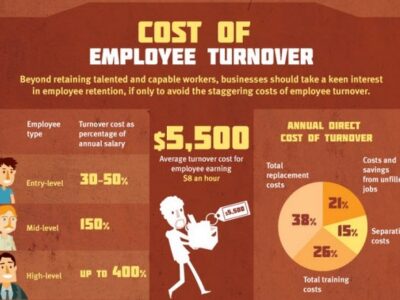Warding Off Back-To-School Burnout
Back to school used to mean that parents were excited to see the kids return to their learning, while the kids were excited to see their friends (but dreaded having homework again). Things may feel a little different this back-to-school season and may be a bit more stressful than previous years, as we adjust yet again to the disrupted schedules and new learning routines the pandemic has brought on. But for both parents and those that employ them — there are ways to help mitigate that anxiety.
For some, burnout happened months ago, as the pandemic dragged on and the strain of managing both work-from-home and school-from-home in the same space started to wear on tempers across the board. For others, it’s just starting to set in, as fears about new variants, vaccines, and safety as we send the kids back into a school environment begins to take a toll.
Whether you need help regaining your momentum, or just tips to help ease the mental strain, here are a few things that both parents and employers can keep in mind in the coming months.
Assess What You Need
We’ve all learned a lot in the past year and a half. About ourselves, our families, the way we work, and the way we learn. It’s time to put some of that into practice. Pay attention to your mental triggers, whether they manifest as depression, anxiety, irritability, memory and concentration issues, or any other reaction. Especially given the ongoing pandemic and other issues plaguing the world right now, none of these are out of the ordinary. However, if you feel like it is interfering with your ability to function more than usual, it’s time to take a step back.
For employees, that may mean taking advantage of any mental health days your company might offer, making sure you eat regular meals throughout the day or establishing a routine for work. Whether your hours are 9-5, 10-2, 7-3, or anything in between, work with your employer to establish a set time when you’re at “work”, and then stick to it. Also, you may want to work with your employer to dedicate “no meeting” days or daily time slots on your calendar to help decrease the number of video meetings you are invited to per day and prevent days of back-to-back meetings.
For employers, make sure to have a policy in place that prioritizes mental health for employees. That can be as simple as allowing them to use sick days for mental health breaks, being flexible with them on hours — especially for parents who need to work around school schedules — and respecting the boundaries they establish.
Renew Your Day-to-Day
It’s not enough to just say “I’m taking a day for self-care.” You need to put that into practice — just hanging out on the couch eating ice cream likely won’t make you feel any better tomorrow, as satisfying as it might feel in the moment. Instead, try a few of these tactics to get back on — or stay on — track:
- Put some fun back in your day. Do something you love — something that is just for you. Rekindle an old hobby, work in your garden, learn something new, go take a walk in the park, do something that brings you joy. Work it into your daily routine – even if it’s just for a few minutes.
- Focus on your accomplishments, rather than what has gone wrong, or what is still on the to-do list. Pat yourself on the back for all the things you got done today, this week, this month, or even this year. Celebrate the wins, even the small ones, and remind yourself that just because you haven’t gotten one thing done, you’re not a failure — you accomplished a lot of other things instead.
- Write down your goals — and make them SMART: Specific, Measurable, Attainable, Realistic, and Timely. It can be hard to see the progress and accomplishments you have achieved when everything feels overwhelming. But if you have one or two concrete goals that you can track and see the progress on, that can go a long way toward making you feel more motivated and engaged. Consider having a SMART goal for both your personal and professional life, but don’t overdo it with too many.
- Appreciate yourself. Learn to recognize that every day you are doing the best you can, and that is enough. Practice self-affirmations morning, noon, and evening for a few minutes every day. Build these self-affirmations by taking a negative thought or anxiety you have, and then spin it into something positive. For example, if you are feeling emotions around failure, turn that into “I am succeeding in my career and I am an amazing parent. I am able to help support my family because of my work ethic.”
Don’t Let Back to School Stress Get You Off Track
If your kids are going back to in-person learning, hopefully, that means a reduction in the amount of stress you put toward monitoring their schoolwork and well-being. It is hard being a parent, teacher, and full-time employee all at the same time, so being able to take one of those back off your plate should allow you to re-balance your time again.
That said, one way to mitigate the stress of back to school in a pandemic is to have a plan — and then a backup plan. Make sure the entire family is on the same page on everything from masks to class attendance. And then, have plans ready should things change — schools return to remote learning, an outbreak, or something else entirely. Having a plan in place, even if it is subject to change, will help you manage the stress and not feel as overwhelmed in the moment.
For parents with kids in districts that are going to continue to remote learning at least for one more semester, you are probably old hand at this. You have already gone through the growing pains, and you know the routine. Take a few moments before the school year officially starts to go back over the procedures for the entire family, and make sure everyone remembers how to share the space without distracting everyone else. For older kids, sit down and find out what worked for them. What didn’t work? And then, as a family, take a few moments to agree on this year’s plan that will give everyone the best environment possible.
For employers, this is another place where you can demonstrate compassion and build trust and loyalty with your team. Be flexible with parents who have school-age children, with a willingness to make reasonable accommodations to allow them to get their work done while keeping their family on track. This is something that can set you apart as an employer that people want to work for.
How Can Employers Help?
With that in mind, there are a few things that employers can do to be proactive about making their company a place that is friendly and accommodating to professional parents.
- Talk to them. Find out exactly what they want and need, don’t just assume. Employees that feel like their individual needs are being met are far more productive and engaged across the board than those who struggle to get it all done. Consider offering an anonymous survey option to get more open and honest answers.
- Examine whether your current policies are sufficient for parents with young or school-age children. Everything from how sick days are handled, to child-care assistance, to flexible hours can be adjusted to better serve families, while not creating an undue burden on the rest of the staff or the business.
- Take a moment to review the last 18 months. The “new normal” has created a lot of policy changes, especially around things like work from home. Take a step back and evaluate what is working for your company, and what isn’t. Which ones have worked surprisingly well and should be maintained long after COVID-19 is finally past us? And which ones worked well in an unusual situation, but need to be set aside as soon as it is reasonable to do so? Don’t just guess, or assume, take a hard look at everything and evaluate each change based on how it impacts both the company and the employees.
- Remove the stigma of talking about mental health. Instead of sick days, change them to personal days, for example, and encourage employees to use them for whatever they need. Have policies in place that emphasize mental health.
- If your employees are in the office, make sure they feel safe with appropriate barriers, mask requirements, and sanitizing stations. Have a vaccine policy — even if it is that you aren’t going to require them. Make sure everyone knows where they stand. Especially for parents, knowing they aren’t going to bring sickness into the home can be a huge stress reliever.
- Continue to communicate. Make sure current policies are given in clear, timely language, and that employees have a way to ask questions and get clarifications if there is something they don’t understand. Lack of knowledge, or feeling like they are being held to ever-shifting standards, can cause a lot of stress and anxiety, lowering productivity and morale.
- Put guidelines in place around things like the number of video meetings in a week, after-hours messaging, or guidelines about how to use company chat can help employees, especially parents, better establish the line between work and home. This in turn will make them less stressed and anxious. Consider a policy like “no meetings or email Fridays” where everyone commits to only sending what is critical to the business, and can’t wait until Monday, giving everyone a day they know they can just focus on getting tasks completed without distractions.
- Finally, offer support. Host team bonding activities to help engage staff and get them excited about their work. These types of events can help improve team communication, facilitate team collaboration, and strengthen team flexibility. Give them a space where they can relax and just enjoy connecting again. This is where TeamBonding can help, with a wide variety of virtual, in-person, and hybrid options that can help teams come together again, as well as unwind from the high-stress world we live in right now.















